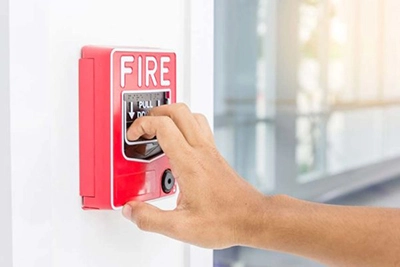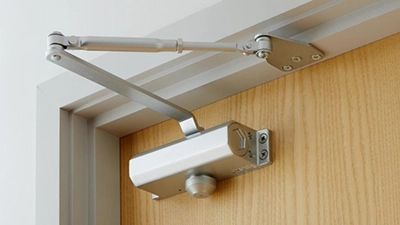Evacuation or Stay Put? – Why it’s important to know the difference
What you do in the event of a fire occurring in the premises you occupy is really important. In the case of places of work, your employer must ensure they give you training and information about:
- what to do
- where to go
- who is in charge
They will also ensure that you get out safely or are at least accounted for, so if you can’t escape, they will notify the fire service, so they are aware to look for you.
Who is responsible for this if you live in a block of flats?
You may have a Building Management Company that is responsible for the fire safety management, you may have a landlord, or you may have both. In some cases, there is a Resident’s Management Company, in which case each occupant has some responsibility.
Once you’ve established who is responsible, they should then be able to advise you on the type of evacuation policy of the building, which should be either Stay Put or Evacuate.
What are the two types of evacuation?
Evacuation: In the event of a fire in the communal areas (the parts you share with the other occupants) or the flats, you should get out.
There should be some form of detection and sounder in these areas. If these activate, then all occupants must get out of the building. If you discover a fire in your flat or the communal areas, there may be some manual call points. These are the red boxes on the walls (see picture), where you break the glass to push a button to activate the alarm. You can use these to warn all other occupants, or in the case of smaller premises, you might need to shout or knock on other flat doors, if your flat doesn’t have a smoke alarm.

In this instance, as some flats may be empty, the priority is to get out. It is always recommended that you consider at least a smoke detector at the entrance to your flat for your own safety and to help warn others. In some cases, alarms in flats can be linked to the alarm in the communal area, so that if a fire starts in the flats, it will activate the alarm for the building.
Doors
In the case of evacuation, the flat doors are an important aspect of fire safety. They help delay the spread of fire and smoke into the communal means of escape, allowing occupants time to get out. Current fire doors hold back fire and smoke for up to 30 minutes (minimum). In the case of older buildings, some original doors may only last 20 minutes. For small premises, this may be acceptable in the case of an evacuation policy provided they are:
- well maintained,
- self-close
- have intumescent strips and seals.
The doors only need to hold back the fire and smoke long enough for everyone to get out safely. Your detection and alarm system is a key part of this, too; the earlier you get a warning to evacuate, the more time you will have.
It is more likely that your premises was originally converted into a block of flats from another type of building, eg a larger house, or a commercial pub etc. It is a converted property.
Stay Put – If a fire starts in another flat or the communal areas, you stay in your flat and do not evacuate unless you are advised by the attending Fire Service to do so OR if the fire starts in your own flat.
There would NOT normally be an alarm in the communal areas of the premises, although there may be detection to activate any form of smoke extraction/control. Again it would be recommended that each flat has its own form of fire/smoke detection to warn occupants within the flat. However, the principle of Stay Put is that each individual flat is its own cell. The cell is designed and constructed so that if a fire starts, it is contained for a minimum of 30 minutes, by which time the fire should have burnt itself out. If it does breach that cell, then it should still take a further 30 minutes to impact the next flat/cell, by which time the Fire Service should have attended and will be in charge.
The ‘cells’ need to be imperforate for Stay Put to work. If they have holes or holes for service pipes to go through; these need to be sealed to the same fire resistance as the cell.
 Flat front doors, in this case, are a key part of ensuring that your flat is safe for Stay Put. The flat door needs to either contain a fire or prevent a fire from entering your flat for at least 30 minutes. If it is damaged or doesn’t fit snugly into the rebate, has large gaps around the edge, or the intumescent strips and smoke seals around the door are damaged, it won’t effectively do its job. If it doesn’t have a self-closer, this could also allow a fire to spread as it won’t close behind anyone escaping.
Flat front doors, in this case, are a key part of ensuring that your flat is safe for Stay Put. The flat door needs to either contain a fire or prevent a fire from entering your flat for at least 30 minutes. If it is damaged or doesn’t fit snugly into the rebate, has large gaps around the edge, or the intumescent strips and smoke seals around the door are damaged, it won’t effectively do its job. If it doesn’t have a self-closer, this could also allow a fire to spread as it won’t close behind anyone escaping.
It is more likely that your premises was originally designed and built to be a block of flats – it is Purpose-built.
If you would like more information about fire safety in purpose-built premises, there is Government guidance HERE
What should you look out for?
- Are there any Fire action notices on display in the communal area, either in the entrance or mounted on the wall next to manual call points? If so, they should tell you what to do in the event of a fire.
- Do you have an alarm in the communal area?
- Are your flat doors of the original construction and well maintained, or have they been upgraded or changed over the years.
- Are the walls and floors of your flat solid concrete, or have you got wooden floorboards?
Answering these questions will give you some idea of what your building might be designed for, but it is ultimately up to the Responsible Person of the building to ensure they know all the answers and maintain the building to support whichever evacuation strategy is in place.
Over the years, many premises that were originally designed and constructed for a Stay Put policy have had alarms fitted into the communal areas. This might be because there are maintenance issues, the ‘cells’ may have breaches in the walls/floors/ceilings, flat doors may have been changed but not to a fire door standard, or it may have been for a temporary reason but never disabled/removed.
It should always be investigated why a building that would normally support a Stay Put policy has been fitted with an alarm. Once work has been undertaken to resolve any issues it may be possible for the premises to once again allow its residents to remain in their flats. Without investigation, the building is giving mixed messages, which can cause problems later on, especially for any attending Fire Service. A purpose-built block of flats would be expected to have residents remaining in their flats. If they are all trying to evacuate while fire crews are trying to attend to a fire, this could impact the time it takes to manage the situation.
